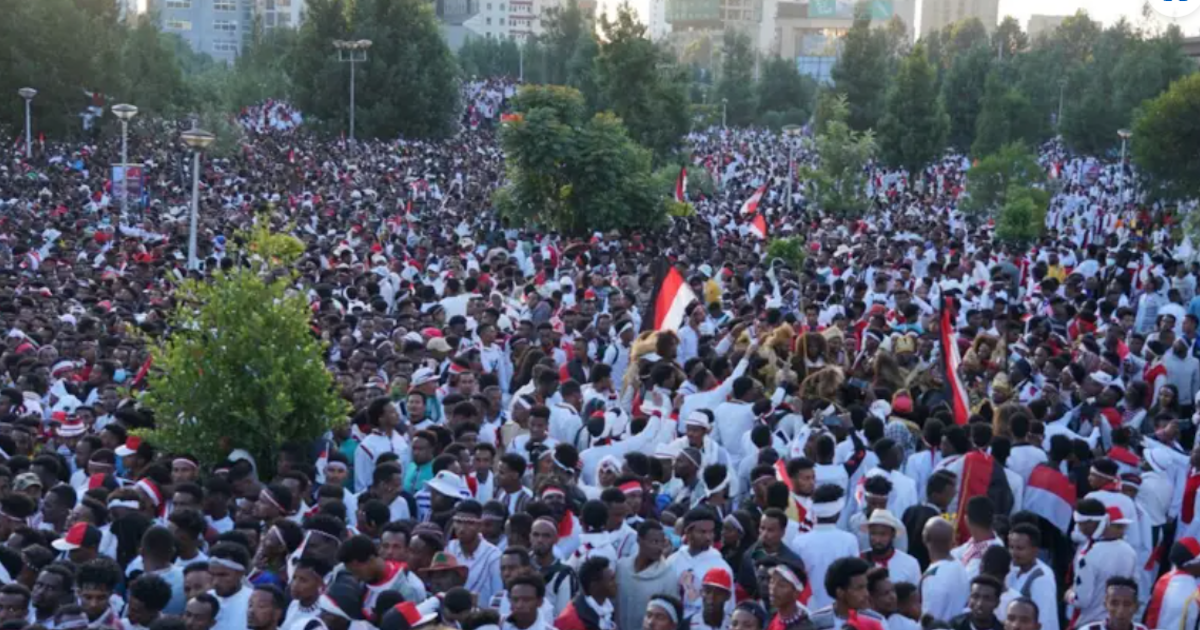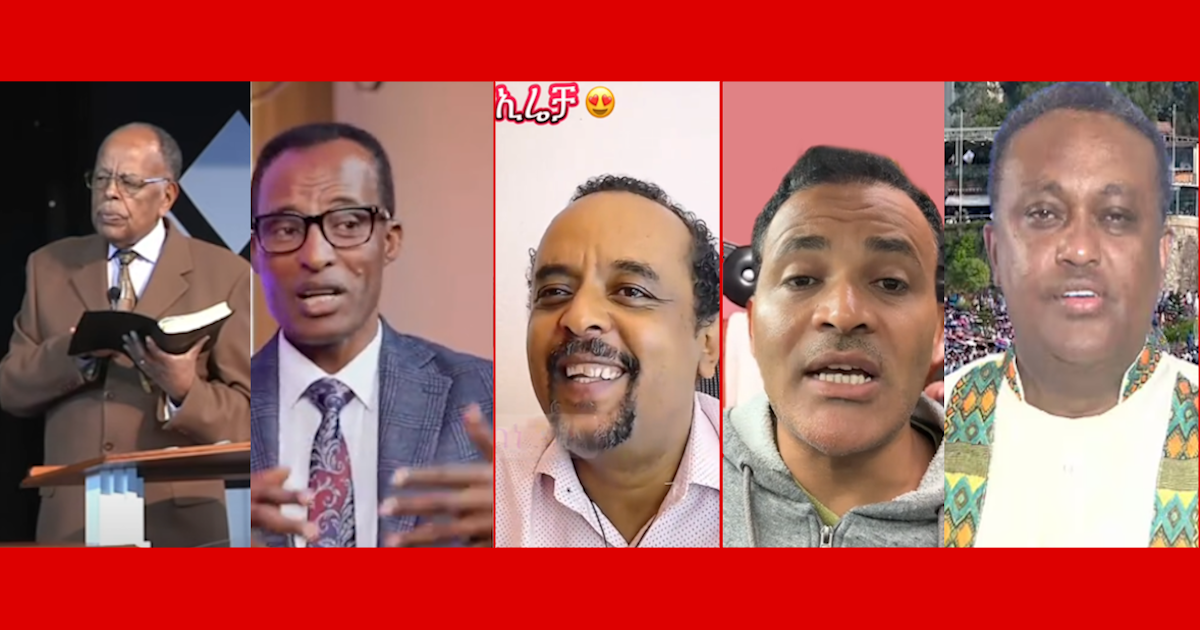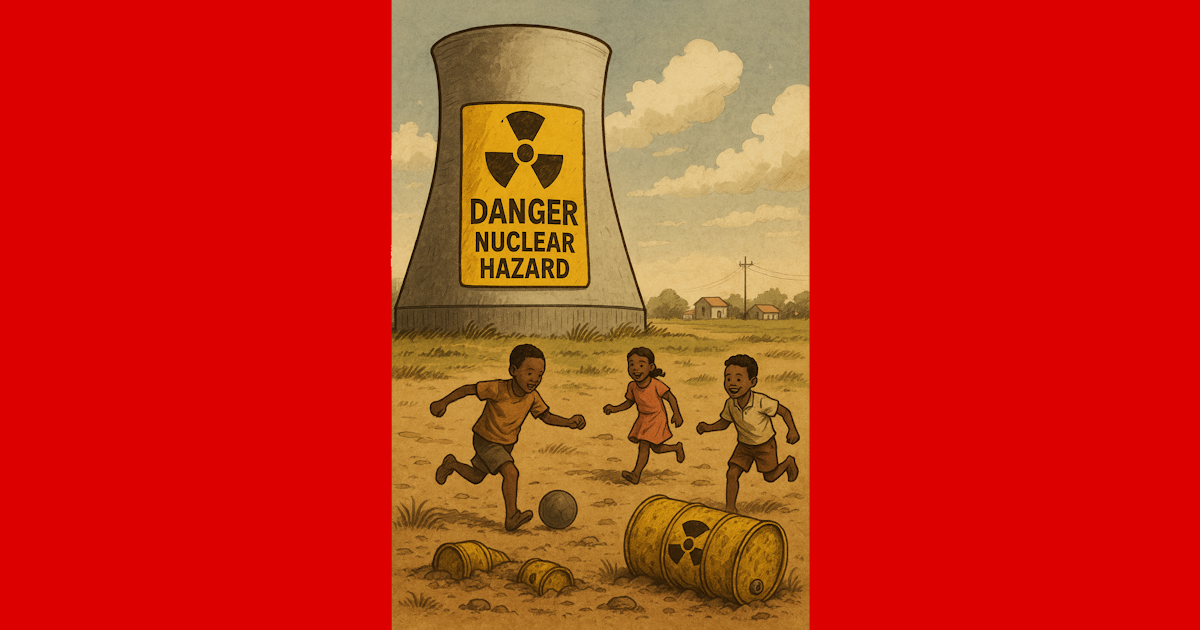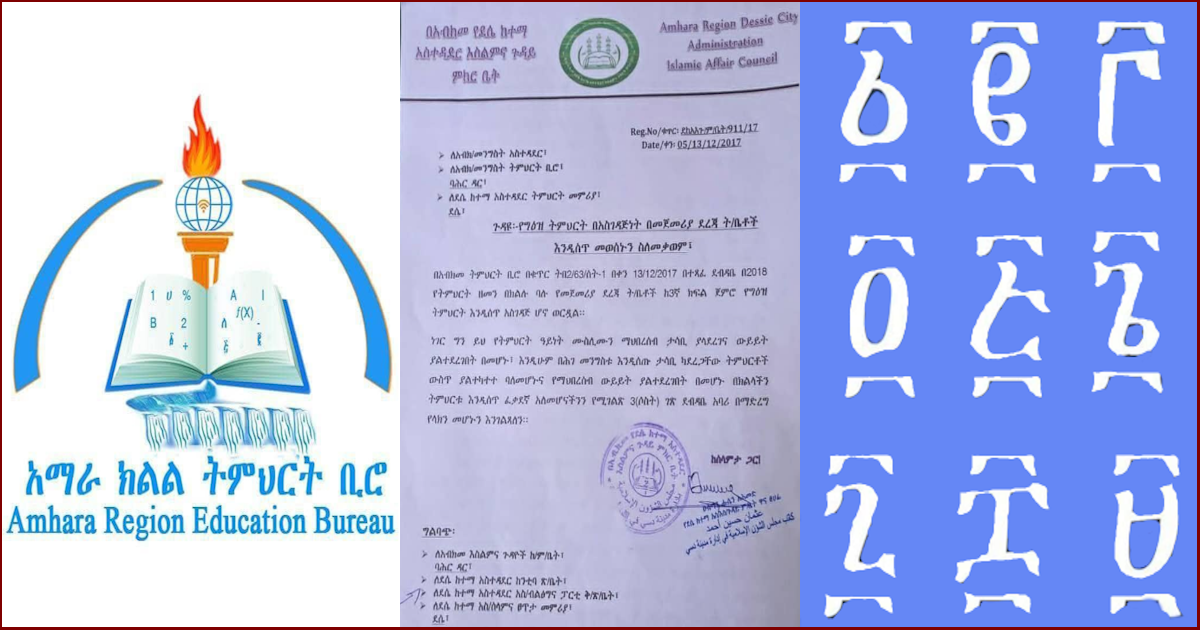The Compendium of Ignorance: Anatomy of Amhara Pseudo-Elite Stereotypes Against the Oromo

Excerpt
Ignorance, when disguised as intellect, has long shaped Ethiopia’s moral decay. This compendium exposes how Amhara pseudo-elites turned mockery of Oromo language, names, and heritage into a badge of honor. Through evidence, reflection, and irony, it reveals that ignorance is not mere absence of knowledge — it is the arrogance that resists enlightenment.
Introduction – When Social Media Turned the Mirror Around
As much as social media has become a powerful platform for learning, it has also evolved into a vast exposé of ignorance — a live repository of stereotypes perpetuated by envy, prejudice, and inherited chauvinism. What was once a one-sided narrative space dominated by gatekeepers of misinformation has now reversed its lens. Every tweet, meme, and comment has become unintentional data — a public archive of how ignorance masquerades as opinion, and how arrogance parades as intellect.
The data social media presents today is not merely anecdotal; it is sociological evidence. It captures, with astonishing fidelity, the anatomy of Ethiopia’s enduring cultural prejudice — particularly that of certain self-styled Amhara “elites” whose worldview remains trapped in a bygone imperial psychology. Their reactions to Oromo cultural assertion, linguistic independence, and intellectual awakening reveal not confidence but deep insecurity.
What they ridicule most loudly is what they secretly envy. For decades, this class projected itself as the custodian of civilization and language — yet social media has exposed them as cultural illiterates in the age of information. Their ignorance is not incidental; it is performative. They wear it as a badge of honor, mistaking mockery for wit and prejudice for patriotism.
This compendium documents, case by case, how such pseudo-intellectual arrogance manifests in public discourse — from ridicule of the Oromo Qubee orthography to derision of personal naming patterns and native place names. Each instance tells a story not of Oromo inferiority but of Amhara insecurity.
Through this collection, I aim to turn ignorance into data, prejudice into pedagogy, and mockery into a mirror. The goal is not humiliation but illumination — to help Ethiopia finally confront how entrenched cultural chauvinism has shaped its intellectual landscape.
Ignorance is not an opinion; it is an unpaid debt to knowledge.
Section I – Linguistic Ignorance: The Qubee Mockery
Few things reveal the intellectual bankruptcy of Ethiopia’s pseudo-elites more starkly than their ridicule of the Oromo Latin-based Qubee orthography. Among self-proclaimed digital journalists and cultural commentators, it has become fashionable to make fun of Qubee — not from understanding, but from sheer ignorance camouflaged as sophistication.
To illustrate this point, I highlight Ato Habtamu Ayalew’s visual mockery of Qubee on social media, referenced in [1], a striking display of how arrogance often advertises ignorance.
What they fail to grasp is that Qubee was not born of resentment but of reason. The Oromo language, Afan Oromo, is phonetically rich — far more so than the archaic Geʽez-based Amharic script could ever handle. Qubee offers one-to-one correspondence between sound and symbol, ensuring precision, clarity, and digital compatibility. In contrast, Amharic script forces readers to infer pronunciation from context, sometimes juggling half a dozen meanings for one written form.
Yet ignorance persists. Habtamu Ayalew, in his sheer ignorance, claims that [1] an Oromo student would “need pages of paper just to write his full name in Qubee.” Such statements are not jokes; they are confessions. They reveal a depth of misunderstanding so complete that it becomes self-parody.
What these detractors ignore is the irony: the very Amharic speakers who mock Qubee now most of them rely on Latin-based transliteration for everyday digital communication on social media. Because the Amharic keyboard slows them down, many write Amharic in Latin letters, exactly what Qubee orthography is based on.
Their frustration led to the creation of the Q2A (Qubee-to-Amharic) transliteration app — a tool allowing users to type in Qubee and instantly convert text into Amharic script [2]. If I recall it correctly, it was authored by an Oromo computer science professor based in UK. Ironically, Qubee now empowers the very language once imposed upon it.
Contrary to the derision of Amhara “elite” like Ato Habtamu Ayalew, Qubee is a triumph of linguistic modernity — phonetic, accessible, and globally interoperable. It has opened Afan Oromo to the digital world, freeing it from centuries of imposed limitation.
Those who ridicule it reveal more about jealousy than wit. What unsettles them is not the alphabet itself, but what it represents: autonomy, literacy, and equality.
The alphabet they mock is the keyboard they borrow.
Ignorance, when amplified, becomes its own parody.
Section II – Cultural Ignorance: The Mockery of Oromo Names
Language shapes identity, but names give it flesh. Personal names are miniature philosophies — reflections of a people’s moral universe. Yet for Ethiopia’s self-styled Amhara elites, Oromo names have become objects of ridicule, not study.
They often target Oromo names ending in -sa — Kumsa, Nagasa, Dammaqssa, Tolosa, Raggasa, Luleessa — as if repetition of sound were a crime of culture. In truth, the -sa suffix in Afan Oromo carries profound meaning: it denotes agency and virtue. Nagasa means “one who brings peace”; Tolosa, “one with His goodness”, almost all designating virtues or nature. To mock such names is to laugh at the very idea of goodness.
Here, I cite Ato Mammaru Adamie [3]— better known online as Mota Keranio (ሞጣ ቀራንዮ) [4] — for his assault on Oromo personal names, documented in reference [5], a telling case of ignorance parading as humour.
Meanwhile, many Amharic names end in -chew — Getachew, Belachew, Andargachew, Gizachew — a pattern equally repetitive yet historically loaded with militaristic or triumphalist overtones: “their master”, “get at them!”, “make them one,” “rule over them“. Some even descend into crudity, as in Shinabachew — “urinate on them.” Still, Oromos do not gather to ridicule such names; respect restrains them.
This is not cultural critique but cultural projection. Those unable to reflect inward deflect outward. Their laughter betrays discomfort, not superiority. Oromo names are aspirational, rooted in harmony and virtue; many Amharic ones commemorate victory and subjugation. Each language tells its own history.
They ridicule sound while glorifying subjugation.
Cultural ignorance, once spoken aloud, becomes history’s footnote.
Section III – Toponymic Ignorance: The Mockery of Native Place Names
If language holds memory, place names anchor it to the earth. Each native toponym is a map of collective consciousness — geography rendered in poetry. Yet to the ignorant, these names sound “foreign” in their own land.
The same digital personality who mocked Qubee has now turned his derision toward the native place names in the city of Finfinnee. On air, he and a colleague mispronounced a list of Oromo toponyms, laughing uncontrollably as if the act itself proved sophistication. The irony is staggering: men discussing “current affairs” by ridiculing the linguistic fabric of the land they stand on.
Here, I cite the podcast by Ato Habtamu Ayalew and his colleague, where news analysis descended into mockery as they ridiculed Finfinnee’s historic Oromo place names, laughing uncontrollably — reference [6]. In the end, one wonders who will have the last laugh.
Names such as Bakkaniisa [tree name] corrupted as Italian sounding Makaniisa; various locales named after dominant tree types, or topography as “sululaa” for slope or “golba” for gorge, make perfect sense to Oromo speakers; they are descriptive and ecological, reflecting the terrain, the woods and rivers by which they were named. To those who never bothered to learn Afan Oromo, they appear alien — and thus, in their arrogance, ridiculous to the extent of inducing uncontrollable laughter. I defer the details to the self-explanatory video clip [6].
But laughter cannot erase truth. Beneath their mockery lies fear: the fear that these original names will be restored, reclaiming history from colonial overlays. Each native toponym revived is a document of resistance; each joke made against it is a confession of unease.
They rename to erase, and laugh to forget — yet the earth remembers.
Mockery fades; the native names remain.
Interlude – Three Faces of the Same Delusion
Linguistic, cultural, and toponymic ignorance are not isolated. They are different masks of one imperial delusion — the inability to coexist with equality. Whether it is the scorn of Qubee, the sneer at Oromo names, or the laughter at Finfinnee’s toponyms, the root impulse is the same: a fear of losing monopoly over meaning.
Language, identity, and geography are the three pillars of existence. To mock any one of them is to undermine all. Those who persist in such derision are not defending heritage; they are reenacting hegemony in miniature.
Social media, meanwhile, has become an unexpected ally of truth. Every broadcast of ignorance becomes permanent evidence. Every sneer is timestamped. The empire has lost its throne, but its echo still performs — louder, smaller, more desperate.
Ignorance unites where humility would enlighten.
The empire is gone, but its echo survives in jokes.
Section IV – Psychological Ignorance: The Fear of Equality
The common thread through all these episodes is clear: ignorance worn as a badge of honor. It has become the currency of a wounded ego — an identity built not on knowledge but on denial.
This is not education gone wrong; it is insecurity institutionalized. Those who mock do not hate understanding — they fear it. Because understanding dismantles hierarchy. When the Oromo define themselves, those accustomed to defining others lose their mirror of control. Their ridicule, therefore, is camouflage — laughter to hide panic.
And yet, the tragedy lies in the absence of shame. These self-anointed patriots seem to believe that repetition makes falsehood real, that speaking louder replaces thinking deeper. They are living proof that propaganda is simply fear pretending to be conviction.
What they call “analysis” is confession. What they call “patriotism” is projection. What they call “truth” is merely the echo of a fading supremacy. For all their noise, what they dread most is the silence of irrelevance.
Ignorance is not strength; it is the inversion of truth.
Fear is not patriotism; it is the confession of inferiority.
Let those who mock equality be remembered not for what they said, but for what they revealed.
Epilogue – From Exposure to Enlightenment
Ignorance, when multiplied by arrogance, becomes a national affliction. The mockery of alphabets, names, and toponyms are not casual lapses — they are the rituals of denial through which a decaying hierarchy tries to keep its illusion alive.
The true crisis is not ignorance itself — for all begin ignorant — but the celebration of ignorance as virtue. These pseudo-elites have mistaken volume for validation, prejudice for pride. They imagine that declaring a falsehood with confidence can make it true. It cannot.
Ironically, the same digital platforms they exploit for derision are preserving their folly forever. Each post, video, and broadcast becomes forensic evidence of the intellectual decay that accompanies arrogance. The data will outlive the delusion.
Yet this record is not compiled to humiliate, but to educate. Shame fades; insight endures. Ethiopia’s renewal will depend on unlearning centuries of imposed hierarchy — on understanding that no nation prospers by mocking its own diversity.
The Oromo cultural and linguistic renaissance is not an act of rebellion but of restoration — a recovery of truth long buried under empire’s noise. In embracing it, Ethiopia gains a future; in rejecting it, she repeats her mistakes.
Ignorance thrives in laughter until knowledge walks in.
Truth needs no permission to exist.
And when a people learn to see mockery as evidence, the age of delusion ends.
Postscript – Why I Chose to Write This. Now.
If language orthography, word pronunciations, or place names sound unfamiliar, that is not ignorance — it is diversity. In any corner of the world, from French and German to Chinese or Māori, difference in expression is the signature of humanity’s beauty. I enjoy the kind of light-hearted humor that illuminates those differences; comedy, when done with grace, can bridge cultures.
But that is not what happens here. For some among the Amhara establishment, the Oromo is not a neighbor to understand, but an object to ridicule. Their jokes are not born of curiosity, but of contempt. What passes as wit is often nothing more than the residue of racism — a primitive instinct of superiority lingering from an imperial past that refuses to die.
I did not write this compendium to trade insult for insult. I wrote it to curate evidence. My intent is not vengeance but reflection — to hold up a mirror and say: look at yourselves, this is what you have become. If even one among them reads these pages and feels a flicker of embarrassment, it will have served its purpose.
This documentation is not merely about the Oromo. It is a window through which the world can glimpse what dozens of nations and nationalities within the Ethiopian empire have endured — the slow humiliation of identity beneath the weight of Amhara chauvinism, still alive, still loud, even in the twenty-first century.
I have long held a personal theory — and the evidence only strengthens it: if the Ethiopian empire disintegrates, it will not be because of liberation movements, but because of the Amharas themselves. They are the ones who, even now, cling unashamedly to the fantasy of dominion, the only region still over-obsessed with the imperial tricolor flag. The anecdotes presented here are but a drop in an ocean — yet they explain why this theory is plausible. Their arrogance will undo the very empire they claim to love.
What drives it all is not power, but fear; not knowledge, but ignorance — ignorance so profound that it mistakes cruelty for cleverness and domination for destiny. That, above all, is the tragedy of the Amhara pseudo-elite: they could have been leaders of enlightenment, but chose to become comedians of arrogance.
History will not remember them for their laughter. It will remember them for what their laughter revealed — a civilization still struggling to recognize its own shadows.
Ignorance, when worn as pride, is not merely a flaw — it is the slow suicide of a nation’s soul.
And Ethiopia will never be whole until truth, not arrogance, becomes its common language.
This Is the Top of the Iceberg
Having stayed away from social media for some time, I found myself unexpectedly drawn back by a recent OROMIA TODAY editorial on Irreechaa, titled “The True Invasion: Setting the Record Straight on Irreechaa in Finfinnee” [7]. That piece rekindled a certain optimism — that perhaps there remains a way to educate even the most incorrigible ignorants, not through outrage, but through subtle exposure. This, then, is my humble contribution to that continuing conversation — my two cents added to a growing collective effort to confront ignorance with evidence.
I call this the top of the iceberg because what has been discussed so far represents only a fraction of the systemic denigration that Oromos face across cultural, intellectual, and artistic spheres. No aspect of Oromo expression has been spared. From music to literature, from scholarship to everyday identity, the campaign of distortion persists — deliberate, coordinated, and rooted in envy more than ideology.
Take, for example, Oromo music. It has become a target of misrepresentation — its lyrics twisted to provoke inter-ethnic tension. The now-famous “Warra Boolee” song, which trended for months after its release over a year ago, broke records not only as a musical success but also, tragically, as a case study in envy-fueled propaganda. Its artistic triumph was hijacked by those determined to reframe it as something divisive. What they could not achieve through creativity, they attempted through distortion. An example of this is shown in reference [8].
Even achievements beyond art become sources of resentment. When an Oromo beauty pageant ranked #1 in Africa and #2 worldwide, the reaction among certain Amhara circles was not pride in shared national representation, but discomfort — as if excellence were a privilege reserved for others [9]. However painful it is to put this into words, the underlying sentiment seems clear: in their worldview, nothing good should come from the Oromo.
The same hostility extends to academia. Oromo scholars who present evidence-based arguments or challenge inherited myths find themselves under assault — not through intellectual debate, but through smear and distortion. Rigorous critique is essential in scholarship; deliberate misinformation is not. When Oromoness (Oromummaa) itself becomes a contested identity, redefined by those unsettled by Oromo assertiveness, it is no longer an academic disagreement — it is a continuation of cultural warfare by other means.
One cannot help but wonder where this deeply entrenched antagonism leads — and when it will end. How long can a society remain at war with the truth? How long can an empire sustain itself by ridiculing the very people who form its foundation?
What we witness today is not confidence but collapse camouflaged as contempt. Their laughter, their derision, their attempts at erasure — all point to a nervous realization that history is shifting. For the first time, the Oromo voice is being heard in its own language, through its own names, on its own land. And that, for some, is unbearable.
This is not the whole story — only the visible tip of a much deeper injustice.
But even the iceberg begins to melt once the sun of truth touches it.
Final Note
As the title suggests, this compendium is a collection of anecdotal evidence — fragments of a larger truth — with vast potential for gradual expansion. Consider this Version 1.0, a living document that will continue to evolve as new instances emerge and untouched themes are explored, including historical distortions, cultural misrepresentations, and enduring stereotypes that still demand scrutiny.
I warmly invite readers to engage with this effort — to challenge, refine, or contribute — but always with reason and justification. Your reflections, whether in agreement or critique, help transform this from a record of ignorance into a dialogue of enlightenment.
Knowledge grows through engagement; truth strengthens through exchange.
Thank you for your interest and for walking with me on this journey toward clarity and conscience.
References
- Habtamu Ayalew on Qubee, TikTok.
- Q2A App at Google Play website, Google Play App Store.
- Petition against Ato Mammaru Adamie for Hate Speech, change.org website.
- Mota Keranio (ሞጣ ቀራንዮ) Now and Before, TikTok.
- Mota Keranio (ሞጣ ቀራንዮ) on TikTok, TikTok.
- Habtamu Ayalew, with His Colleague, Making Fun if Native Oromo Place Names in the City of Finfinnee, TikTok.
- OT Editorial, The Real Invasion: Setting the Record Straight on Irreechaa in Finfinnee, 4 October 2025, OROMIA TODAY.
- Illustrative Example of Deliberate Lyrical Distortion, TikTok.
- Kumaa Daadhii, Safuu Is Not Lost—It Was Never Yours to Lose, 12 June 2025, OROMIA TODAY.





